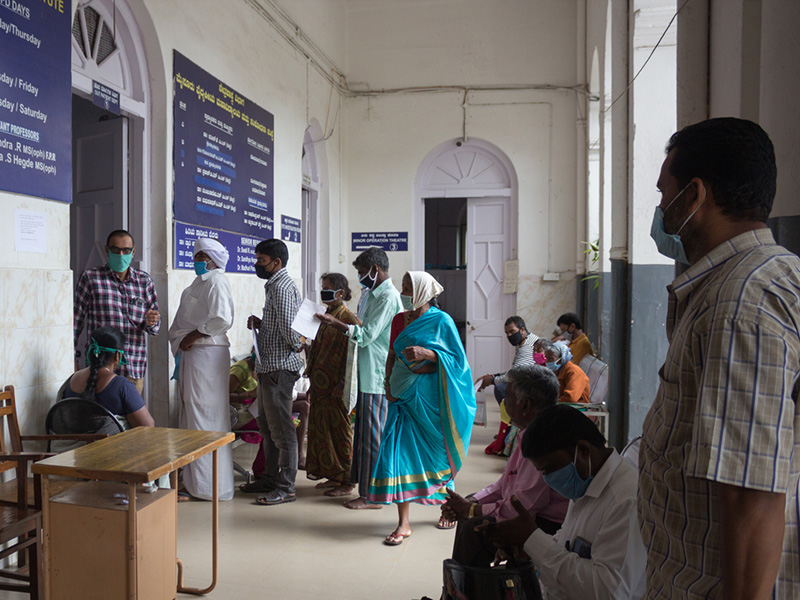COVID-19 is far from over

People waiting in queue to get the primary health check up for the Covid19 Coronavirus at a dedicated wing of the Krishnaraja Hospital in Mysore of Karnataka state in India. Photo by Priya Darshan, courtesy istock.
With the CDC’s recent guidance that individuals vaccinated against COVID-19 can socialize unmasked, it would appear that things are getting better. That, however, is not the case everywhere.
India has made headlines in recent weeks thanks to a highly transmissible variant of COVID-19. That country has seen a total of 24 million infections, with as many as 4,000 people per day succumbing to the virus. The crisis has been made worse due to a shortage of oxygen, a dire situation for a disease that primarily attacks the lungs.
While India has experienced several factors that have come together to exacerbate the spread and deadliness of COVID, other countries are also facing a continued rapid spread of the virus. Countries like Argentina, Brazil, Georgia, Turkey, and others continue to see very high rates of COVID per capita.
We’ve got to do better.
We live in an inescapably interconnected world, and it does not serve us physically or emotionally to allow lower-income countries to suffer from the ravages of a disease like COVID. SARS-CoV-2 began half-way around the world and within weeks was present in the U.S., and this is a scenario that could be true for any infectious disease originating in any country including, maybe even especially, our own.
Organizations like the United Nations, the UN Children’s Fund (UNICEF), the World Health Organization, and Doctors Without Borders/Médecins Sans Frontières are mobilizing volunteers and gathering supplies like oxygen, vaccines, and testing machines. But we are responding to the situation after it has already become a crisis. We need to find ways we can proactively anticipate needs and be ready to respond much more quickly to save as many lives as possible.
